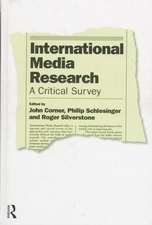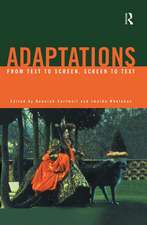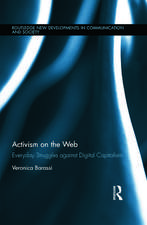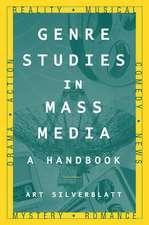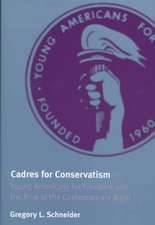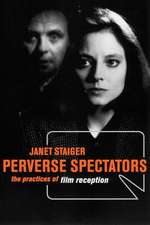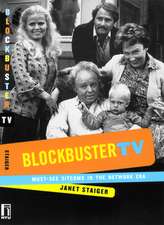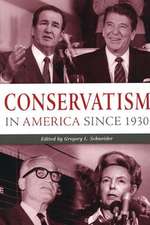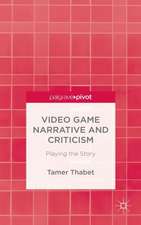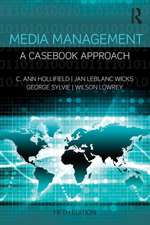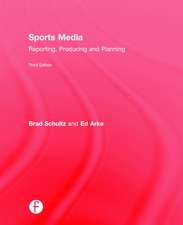The Classical Hollywood Cinema: Film Style and Mode of Production to 1960
Autor David Bordwell, Janet Staiger, Kristin Thompsonen Limba Engleză Paperback – 28 iul 1988
'At the very least, this blockbuster is probably the best single volume history of Hollywood we're likely to get for a very long time.' Paul Kerr City Limits
'Persuasively argued, the book is also packed with facts, figures and photographs.' Nigel Andrews Financial Times
Acclaimed for their breakthrough approach, Bordwell, Staiger and Thompson analyze the basic conditions of American film-making as a historical institution and consider to what extent Hollywood film production constitutes a systematic enterprise, in both its style and its business operations.
Despite differences of director, genre or studio, most Hollywood films operate within a set of shared assumptions about how a film should look and sound. Such assumptions are neither natural nor inevitable; but because classical-style films have been the type most widely seen, they have come to be accepted as the 'norm' of film-making and viewing.
The authors show how these classical conventions were formulated and standardized, and how they responded to the arrival of sound, colour, widescreen ratios and stereophonic sound. They argue that each new technological development has served a function within an existing narrational system.
The authors also examine how the Hollywood cinema standardized the film-making process itself. They describe how, over the course of its history, Hollywood developed distinct modes of production in a constant search for maximum efficiency, predictability and novelty.
Set apart by its combination of theoretical analysis and empirical evidence, this book is the standard work on the classical Hollywood cinema style of film-making from the silent era to the 1960s. Now available in paperback, it is a 'must' for film students, lecturers and all those seriously interested in the development of the film industry.
Preț: 319.40 lei
Nou
Puncte Express: 479
Preț estimativ în valută:
61.12€ • 63.98$ • 50.57£
61.12€ • 63.98$ • 50.57£
Carte disponibilă
Livrare economică 15-29 martie
Livrare express 01-07 martie pentru 61.74 lei
Preluare comenzi: 021 569.72.76
Specificații
ISBN-13: 9780415003834
ISBN-10: 0415003830
Pagini: 652
Ilustrații: 128pp of b & w photographs
Dimensiuni: 189 x 246 x 43 mm
Greutate: 1.21 kg
Ediția:1
Editura: Taylor & Francis
Colecția Routledge
Locul publicării:Oxford, United Kingdom
ISBN-10: 0415003830
Pagini: 652
Ilustrații: 128pp of b & w photographs
Dimensiuni: 189 x 246 x 43 mm
Greutate: 1.21 kg
Ediția:1
Editura: Taylor & Francis
Colecția Routledge
Locul publicării:Oxford, United Kingdom
Recenzii
`At the very least, this blockbuster is probably the best single volume history of Hollywood we're likely to get in a very long time.' - City Limits
`Persuasively argued, the book is also packed with facts, figures and photographs.' - Financial Times
`An exhaustive study of Hollywood cinema to 1960.' - Times Education Supplement
`A dense, challenging and important book.' - The Observer
`Persuasively argued, the book is also packed with facts, figures and photographs.' - Financial Times
`An exhaustive study of Hollywood cinema to 1960.' - Times Education Supplement
`A dense, challenging and important book.' - The Observer
Cuprins
Acknowledgements Preface Part One: The classical Hollywood style, 1917-60 1. An excessively obvious cinema 2. Story causality and motivation 3. Classical narration 4. Time in the classical film 5. Space in the classical film 6. Shot and scene 7. The bounds of difference Part Two: The Hollywood mode of production to 1930 8. The Hollywood mode of production: its conditions of existence 9. Standardization and differentiation: the reinforcement and dispersion of Hollywood's practices 10. The director system: management in the first years 11. The director-unit system: management of multiple-unit companies after 1909 12. The central producer system: centralized management after 1914 13. The division and order of production: the subdivision of the work from the first years through the 1920s Part Three: The formulation of the classical style, 1909-28 14. From primitive to classical 15. The formulation of the classical narrative 16. The continuity system 17. Classical narrative space and the spectator's attention 18. The stability of the classical approach after 1917 Part Four: Film style and technology to 1930 19. Technology, style and mode of production 20. Initial standardization of the basic tehnology 21. Major technological changes of the 1920s 22. The Mazda tests of 1928 23. The introduction of sound Part Five: The Hollywood mode of production, 1930-60 24. The labor-force, financing and the mode of production 25. The producer-unit system: management by specialization after 1931 26. The package-unit system: unit management after 1955 Part Six: Film style and technology, 1930-60 27. Deep-focus cinematography 28. Technicolor 29. Widescreen processes and stereophonic sound Part Seven: Historical implications of the classical Hollywood cinema 30. Since 1960: the persistence of the mode of film practice 31. Alternative modes of film practice Envoi Appendix A: The unbiased sample Appendix B: A brief synopsis of the structure of the United States film industry, 1896-1960 Appendix C: Principal Structures of the US film industry, 1894-1930 Appendix D: Lighting plots and descriptions Notes Select bibliography Photograph credits Index
Notă biografică
David Bordwell, Janet Staiger, Kristin Thompson
Descriere
Acclaimed for its breakthrough approach and its combination of theoretical analysis and empirical evidence, this is the standard work on the classical Hollywood cinema style of film-making from the silent era to the 1960s.

